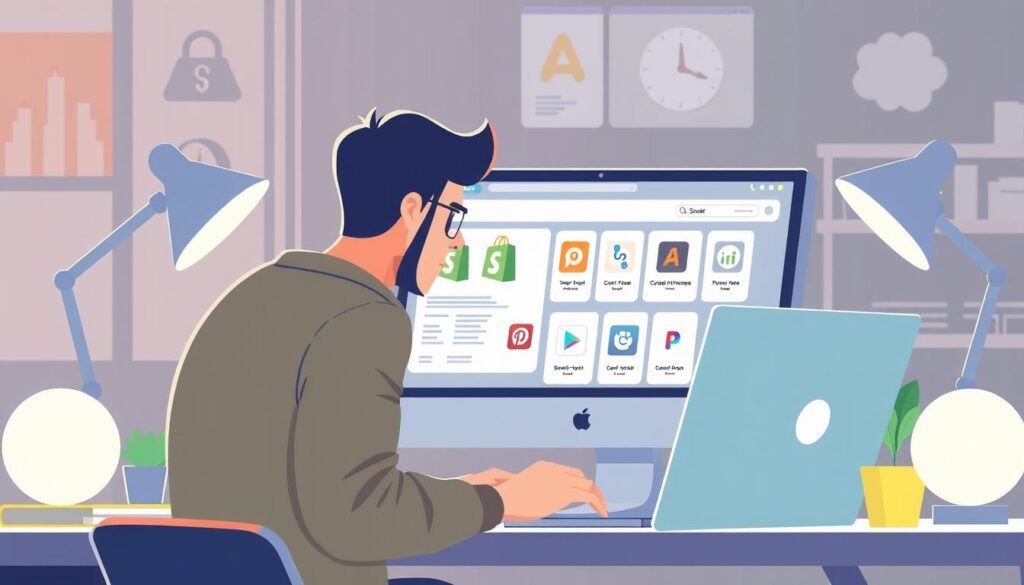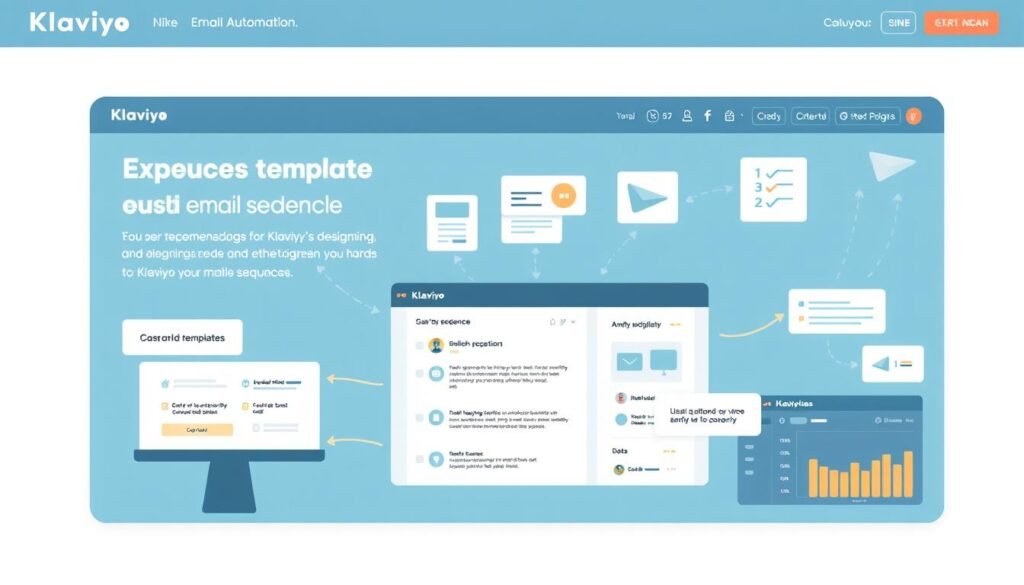Building a Profitable Dropshipping Business from Scratch
As I reflect on my journey, I’m reminded of the allure of creating a successful online business with minimal upfront costs. The global eCommerce sales continue to rise, and dropshipping has become an attractive way to enter the digital business world.
I started with zero experience in e-commerce, but through strategic planning and consistent execution, I was able to build a dropshipping business that generates $10,000 monthly in revenue. In this case study, I’ll share my personal success story, including the strategies, tools, and decision-making processes that enabled me to transform a simple online store into a profitable business within six months.
My journey wasn’t without its challenges, but it was through navigating these obstacles that I was able to achieve profit and scale my business effectively. I’ll share my insights on how to overcome common challenges and create a thriving online store.
Key Takeaways
- How to start a dropshipping business with minimal investment
- The importance of strategic planning in achieving success
- Common challenges faced by new entrepreneurs and how to overcome them
- The role of consistent execution in building a profitable online store
- Scaling your business effectively using the dropshipping model
My Dropshipping Journey Begins
Embarking on my dropshipping journey was a strategic decision, driven by the model’s low barrier to entry and flexibility. As I navigated through various online business models, I discovered that dropshipping offered the perfect blend of minimal upfront costs and the potential for significant returns.
Why I Chose Dropshipping as a Business Model
Dropshipping is a retail fulfillment method where an online store sells products without keeping inventory. Instead, orders are forwarded to a third-party supplier—typically from platforms like AliExpress or CJ Dropshipping—who then ships the product directly to the customer. This business model eliminates the need for warehouse space, large capital, and complex logistics. I was drawn to this model because it allowed me to start part-time while maintaining my day job, thereby testing the waters without risking financial stability.
My research indicated that successful dropshipping stories often highlighted the importance of careful product selection and effective marketing. I studied various case studies to understand what separated profitable businesses from those that failed, which informed my decision-making process.
Setting Realistic Expectations and Goals
Setting realistic expectations was crucial to my success. I established clear, achievable monthly revenue goals and created a timeline for growth that kept me motivated without feeling overwhelmed. My initial investment was allocated strategically between platform costs, product research, and marketing to maximize my chances of success from the beginning.
| Initial Investment Area | Allocated Amount | Percentage of Total |
|---|---|---|
| Platform Costs | $100 | 40% |
| Product Research | $75 | 30% |
| Marketing | $75 | 30% |
| Total | $250 | 100% |
Finding My Profitable Niche
After extensive research, I identified a niche that would become the foundation of my dropshipping business. This crucial step involved analyzing various factors to determine the most profitable opportunity.
The Research Process Behind My Niche Selection
My research process was systematic and thorough, involving the use of tools like Google Trends and social media insights to identify niches with strong demand but manageable competition levels. I analyzed market trends, competition levels, and profit margins across multiple potential categories.
- Utilized Google Trends to identify trending products and niches.
- Conducted competitor analysis to assess market saturation.
- Evaluated profit margins to ensure the niche was financially viable.
Why Pet Accessories Became My Winning Category
I ultimately chose pet accessories as my niche due to its passionate customer base, evergreen demand, and opportunities for brand building. The pet accessories market offered unique advantages, including an emotional connection with customers and high average order values.
According to recent data, the pet accessories market is not only lucrative but also growing, making it an attractive niche for dropshipping. With a strong audience and potential for success stories, this niche aligned perfectly with my business goals.

As Andreas and Alexander recommend, focusing on products for specific niches helps create a strong brand. The pet accessories niche allowed me to do just that, connecting with pet owners on an emotional level and building a loyal customer base.
Building My Dropshipping Store Foundation
The foundation of my dropshipping success story lies in the strategic decisions I made when setting up my store. This involved choosing the right platform, selecting an appropriate theme, installing essential apps and tools, and making a thoughtful initial investment.
Platform and Theme Selection
I opted for Shopify as my e-commerce platform due to its user-friendly interface, extensive app ecosystem, and scalability, making it ideal for my dropshipping business.

Essential Apps and Tools for Store Setup
To ensure my store was fully functional, I installed several essential apps and tools. These included Oberlo for product sourcing, Loox for customer reviews, and Klaviyo for email marketing automation.

Initial Investment Breakdown
My initial investment for setting up the online store was $290, allocated across domain registration, Shopify subscription, logo creation, essential apps, and initial product testing. This strategic allocation helped minimize costs while maximizing the potential for success in my dropshipping business.
The Product Testing Phase
My approach to product testing involved a systematic evaluation of multiple products to identify a winning item for my dropshipping store.
The process began with selecting initial products based on specific criteria such as solving a clear problem, having a “wow factor,” and offering healthy profit margins. I tested 5 different products via Meta (Facebook/Instagram) ads, with only 1 product showing significant traction—a reflective pet harness with low shipping time and high perceived value.
Testing Strategy and Metrics
My testing strategy involved running small-budget ad campaigns for multiple products simultaneously. This approach allowed me to quickly identify which items resonated with my target audience without significant financial risk.
To evaluate product performance, I used key metrics such as click-through rates, conversion rates, and customer feedback. These metrics helped me make data-driven decisions about which products to continue investing in.
| Product | Sales | Revenue | Net Profit/Loss |
|---|---|---|---|
| Reflective Pet Harness (Initial Test) | 11 | $220 | -$80 |
| Reflective Pet Harness (After Optimization) | 90 | $1,100 | $310 |
Identifying the Winning Product
The reflective pet harness emerged as my first winning product. I identified its potential through engagement metrics and initial sales data, which indicated a strong market demand.
After focusing 100% on the pet harness, I created UGC-style video content and switched to TikTok ads for better CPMs. This strategic adjustment led to a significant increase in sales and revenue, resulting in a net profit of $310.

From $0 to $10K: My Dropshipping Success Story
In this section, I’ll detail the month-by-month progression of my dropshipping business, from initial sales to achieving $10K in monthly revenue. This journey was marked by strategic decisions, learning from setbacks, and adapting to changes in the market.
Month 1: The First Sales and Lessons Learned
In the first month, I focused on setting up my store and testing initial products. The result was 11 sales, generating $220 in revenue, but I incurred a net loss of $80. Despite the loss, this period was crucial for understanding customer behavior and refining my marketing approach.
Month 2-3: Gaining Traction and Scaling
During months 2 and 3, I refined my product listings, implemented customer feedback, and started creating custom content. I also added a logo to my packaging and introduced Trustpilot reviews, enhancing my brand’s credibility. The outcome was 90 sales, $1,100 revenue, and a $310 profit by the end of month 3. This period marked my first profitable month and indicated that my strategies were working.
Month 4-6: Breaking the $10K Milestone
Months 4 through 6 involved strategic scaling. I introduced bundle offers using ReConvert and integrated SMSBump for cart recovery. By month 6, I had launched influencer campaigns on Instagram, hired a virtual assistant for customer support, and created a landing page funnel for TikTok. These efforts culminated in $10,200 revenue and a $3,100 profit by month 6, successfully breaking the $10K milestone.
| Month | Revenue | Profit | Key Actions |
|---|---|---|---|
| 1 | $220 | -$80 | Initial product testing |
| 2-3 | $1,100 | $310 | Refined product listings, custom content |
| 4-5 | $7,800 | $2,650 | Bundle offers, cart recovery integration |
| 6 | $10,200 | $3,100 | Influencer campaigns, VA for support |
For more insights into successful dropshipping stories, you can explore other case studies on https://ali2woo.com/blog/dropshipping-success-stories/.

Marketing Strategies That Drove My Success
In the world of dropshipping, marketing is everything, and my success story is a testament to the power of strategic marketing decisions. As I reflect on my journey, it’s clear that the right marketing strategies were instrumental in driving my business forward.
Why UGC-Style Content Outperformed Traditional Ads
I discovered that creating UGC-style video content was a game-changer for my dropshipping business. By leveraging authentic, customer-focused videos, I was able to achieve over 200% higher engagement compared to traditional product videos.
The process of creating UGC content for dropshipping involves encouraging customers to share their experiences with your products. This can be done by offering incentives, such as discounts or free products, in exchange for reviews or videos showcasing the product in use.
Transitioning from Facebook to TikTok Ads
As my business grew, I made a strategic decision to transition from Facebook to TikTok ads to take advantage of better CPMs (cost per mille). This shift resulted in improved cost-per-acquisition metrics and higher conversion rates, significantly boosting my return on ad spend.
Influencer Marketing Approach
My influencer marketing strategy focused on partnering with micro-influencers who had highly engaged audiences. I reached out to these influencers and asked them to create short clips showcasing my products in exchange for free products. By allowing selected influencers to run paid ads from their accounts, I was able to improve trust and boost CTRs (click-through rates).
By diversifying my marketing strategies to include UGC-style content, TikTok ads, and influencer partnerships, I was able to reach a wider audience and drive success for my dropshipping business. The key to my success lay in continuously testing and optimizing my marketing approaches based on performance results.
Building a Brand, Not Just a Store
As I progressed in my dropshipping journey, I realized the importance of transforming my store into a recognizable brand. This realization marked a significant shift in my business strategy, focusing on creating a lasting impression on my customers.

Creating a Compelling Brand Story
I developed a genuine brand story that resonated with pet owners, emphasizing the love and care they have for their pets. This narrative connected emotionally with my target audience, differentiating my store from competitors and establishing a unique identity in the market.
Customizing Packaging and Product Experience
To enhance the overall customer experience, I worked with suppliers to customize packaging with my brand logo. This not only improved the unboxing experience but also added a professional touch to the product. By doing so, I was able to create a cohesive brand image that reflected the value I offered to my customers.
Leveraging Social Proof and Reviews
The power of social proof played a crucial role in building trust among potential customers. I utilized tools like Trustpilot and Loox to collect and showcase authentic reviews with photos, significantly influencing purchasing decisions. Over 70% of my customers checked reviews before making a purchase, demonstrating the impact of social proof on building trust and driving sales.
By focusing on these key areas, I was able to establish a strong brand that offered value to my customers, ultimately driving loyalty and increasing profit margins. My journey from a generic dropshipping store to a distinctive brand was a strategic decision that paid off, setting my business up for long-term success.
Email Marketing and Customer Retention Tactics
Through strategic email marketing, I was able to transform one-time buyers into repeat customers, significantly increasing my store’s revenue.
My comprehensive email marketing strategy included setting up profitable email flows that not only recovered abandoned carts but also encouraged repeat purchases, ultimately generating 15% of my total revenue.
Setting Up Profitable Email Flows
I set up three core email sequences: Welcome Sequence, Cart Abandonment, and Post-Purchase Upsell. Each sequence was designed with specific conversion goals in mind, such as increasing customer engagement and driving sales.
The best email marketing software for dropshipping, such as Klaviyo, helped me automate and optimize these email flows.

Post-Purchase Strategies That Increased Revenue
My post-purchase strategies focused on maximizing customer lifetime value through strategic upselling, cross-selling, and loyalty incentives that encouraged repeat purchases.
By introducing bundle offers using ReConvert and integrating SMSBump for cart recovery, I was able to significantly increase average order value and customer retention rates.
The combination of email marketing with other channels like SMS and retargeting ads created a cohesive customer journey that drove profitable customer relationships.
Challenges and Mistakes Along the Way
As I navigated the world of dropshipping, I encountered numerous challenges that tested my resolve and forced me to adapt quickly. My journey to $10K in sales was marked by significant obstacles, but these challenges ultimately contributed to my growth and success.
Shipping Time Issues and How I Solved Them
One of my earliest and most significant challenges was dealing with long shipping times. Initially, my first three products were shipped from China, resulting in 25-30 day delivery times. This led to customer dissatisfaction and increased refund requests. To address this, I transitioned to using US-based suppliers and local warehouses through platforms like Spocket and CJ Dropshipping, significantly reducing shipping times and improving customer satisfaction.
Customer Support Struggles
Another challenge I faced was underestimating the volume and complexity of customer inquiries. Initially, delayed replies led to an increase in refund requests. To improve response times and customer satisfaction, I developed more efficient support systems and eventually hired a virtual assistant (VA) to handle customer support. This change led to a noticeable improvement in customer satisfaction scores.
Ad Creative Testing Failures
I also learned the hard way about the importance of testing ad creatives early and often. Initially, I ran the same ad for three weeks, wasting budget on underperforming ads. Once I began split-testing thumbnails, hooks, and formats, my Return on Ad Spend (ROAS) improved significantly. This experience taught me the value of a systematic testing framework in optimizing ad performance.
These challenges taught me that anticipating problems before they arise is crucial in dropshipping. I developed contingency plans for common issues like supplier stockouts, shipping delays, and seasonal fluctuations, which helped me navigate future challenges more effectively.
| Challenge | Solution | Outcome |
|---|---|---|
| Long Shipping Times | Switched to US-based suppliers | Reduced shipping times, improved customer satisfaction |
| Inadequate Customer Support | Hired Virtual Assistant | Improved response times, higher customer satisfaction scores |
| Underperforming Ad Creatives | Implemented systematic ad testing | Significant improvement in ROAS |
Conclusion: Key Takeaways for Aspiring Dropshippers
As I reflect on my journey from $0 to $10K in monthly dropshipping revenue, I’ve distilled the key lessons that contributed to my success. My experience has shown that simplicity is crucial; a clean, fast, and mobile-friendly store design is essential for converting visitors into customers.
Speed is another critical factor, as delays in shipping or site loading can significantly impact conversions. Prioritizing customer satisfaction by solving problems quickly is vital for building brand loyalty. Moreover, the quality of product creatives, such as video ads, can make or break a campaign.
To succeed in dropshipping, it’s essential to be patient and persistent. Building relationships with reliable suppliers ensures product quality and timely fulfillment. As the business landscape continues to evolve, staying informed about emerging trends and opportunities is crucial. By learning from my stories of success and challenges, aspiring entrepreneurs can better navigate the path to achieving their own profit goals.
FAQ
What is dropshipping, and how does it work?
How do I choose the right niche for my dropshipping business?
What are the most important factors in selecting a supplier for dropshipping?
How do I market my dropshipping store effectively?
What are some common challenges in dropshipping, and how can I overcome them?
How can I build a brand and increase customer retention in my dropshipping store?
What is the typical initial investment required to start a dropshipping business?
editor's pick
latest video
news via inbox
Nulla turp dis cursus. Integer liberos euismod pretium faucibua




